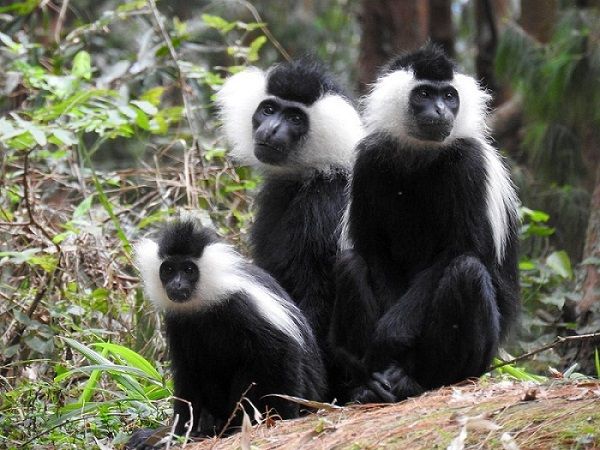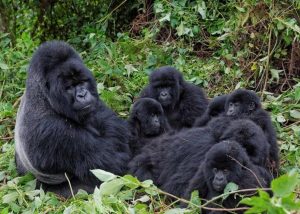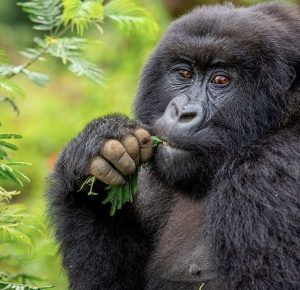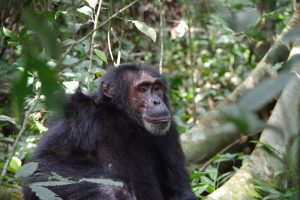If you’re seeking a unique primate experience beyond the famed mountain gorillas, Colobus monkey trekking in Nyungwe Forest offers an equally thrilling and visually captivating adventure. Nestled in Rwanda’s southwestern highlands, Nyungwe Forest National Park is home to the largest troop of Angolan colobus monkeys in Africa, and trekking to see them is an unforgettable journey through one of the continent’s oldest rainforests.
In this guide, we’ll explore everything you need to know about colobus monkey trekking in Nyungwe — from where it happens, what to expect, and why it’s worth adding to your Rwanda itinerary.
What Makes Colobus Monkey Trekking in Nyungwe Unique?
Colobus monkey trekking is different from gorilla or chimp trekking. While gorilla treks are focused on small, endangered populations, colobus monkey groups can number over 400 individuals, making the sight of them an absolutely stunning spectacle.
In Nyungwe, these monkeys move in large troops through tall trees and mid-level forest canopies. Their striking black-and-white coats, long white fringed tails, and acrobatic movements make them a photographer’s dream.
Where Does Colobus Monkey Trekking Take Place in Nyungwe?
The trek primarily begins from Gisakura, on the western edge of Nyungwe National Park. The Uwinka Visitor Center serves as a starting point for many of the park’s primate excursions, including colobus tracking.
Most sightings take place in Gisakura Tea Estate and the nearby forests, where the colobus monkeys are habituated and easy to locate.
What Species of Colobus Monkeys Are in Nyungwe?
Nyungwe is home to two major types of colobus monkeys:
- Angolan Black-and-White Colobus (Colobus angolensis) – The most prominent and commonly tracked species.
- Mantled Guereza (Colobus guereza) – Often spotted in smaller groups and mixed troops.
The Angolan colobus monkeys in Nyungwe are habituated, making it easier for visitors to get close and observe their social behavior without causing stress or disruption.
What Should You Expect During the Trek?
Trekking colobus monkeys is moderately easy compared to other primate treks. It usually involves 1–2 hours of walking, depending on the group’s location.
Expect:
- Early morning departure from your lodge (usually around 6:00–7:00 a.m.)
- A short briefing by a trained park ranger or guide
- A guided hike through lush, biodiverse rainforest
- Up-close encounters with large colobus monkey troops (bring your camera!)
Once you find the troop, you can observe them for up to one hour, taking in their social interactions, feeding habits, and acrobatics.
How Much Does Colobus Monkey Trekking in Nyungwe Cost?
The trekking permit costs approximately USD $60 per person, which includes a ranger guide and park entrance for the activity.
Compared to the cost of gorilla trekking (USD $1,500 in Rwanda), colobus monkey tracking is an affordable way to experience primate tourism in the region.
When Is the Best Time to Trek Colobus Monkeys in Nyungwe?
You can enjoy colobus monkey trekking year-round, but the dry seasons from:
- June to September and
- December to February
…are considered the best. Trails are less slippery, visibility is better, and the monkeys are easier to spot in the thinner foliage.
However, visiting during the green (wet) season gives you lush landscapes and fewer tourists, although trails may be muddier.
What Should You Pack for the Trek?
To fully enjoy your trek, be sure to pack:
- Comfortable hiking boots with good grip
- Long-sleeved shirt and trousers (to protect against insects and plants)
- Rain jacket or poncho (Nyungwe is a rainforest — showers can be unpredictable)
- Reusable water bottle
- Snacks and energy bars
- Camera with zoom lens (monkeys often stay in the canopy)
- Insect repellent and sunscreen
Can You Combine Colobus Monkey Trekking with Other Activities in Nyungwe?
Absolutely. Nyungwe offers a wide range of ecotourism and adventure options:
- Chimpanzee Trekking in Cyamudongo Forest
- Canopy Walk Experience – a suspended bridge walk 70 meters above the forest floor
- Bird Watching – home to over 300 bird species, including the Rwenzori turaco
- Nature Hikes – with over 130 km of trails to choose from
- Tea Plantation Tours in Gisakura or Gisovu
You can combine colobus monkey trekking with any of these activities for a full-day or multi-day itinerary.
Where Can You Stay When Trekking in Nyungwe?
Several lodges and guesthouses near Gisakura and Uwinka provide easy access to trekking points. Options range from budget to luxury:
- Nyungwe House by One&Only – luxury lodge experience
- Gisakura Guest House – budget-friendly and close to park offices
- Nyungwe Top View Hill Hotel – mid-range option with stunning views
- Kitabi Eco-Center – ideal for budget and eco-conscious travelers
Most accommodations can help you organize your trek and provide packed breakfasts or lunches.
Why Should You Choose Colobus Monkey Trekking in Nyungwe?
Here’s why this experience stands out:
- Massive Troops – Watch hundreds of monkeys move together in one of the largest troops in Africa
- Less Crowded – Enjoy a more personal and intimate wildlife encounter than the heavily booked gorilla treks
- Stunning Scenery – Trek through one of Africa’s oldest montane rainforests with incredible biodiversity
- Affordable – At just a fraction of the cost of gorilla trekking
- Excellent for Photography – The monkeys are active, sociable, and incredibly photogenic
Is Colobus Monkey Trekking Worth It?
Absolutely. If you’re passionate about primates, nature, or photography — or if you simply want to experience a lesser-known gem in Rwanda’s tourism crown — colobus monkey trekking in Nyungwe delivers a rich and rewarding adventure.
It’s easy to combine with other Nyungwe attractions, affordable, and suitable for travelers of all ages. Whether you’re traveling solo, as a couple, or with family, this is one of Rwanda’s best kept secrets.




